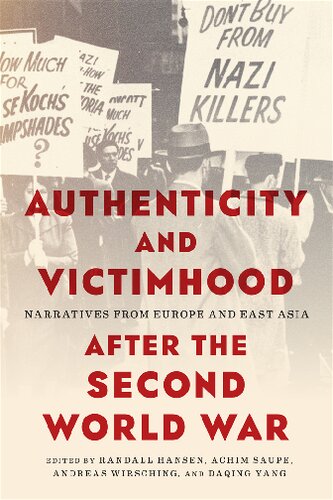

Most ebook files are in PDF format, so you can easily read them using various software such as Foxit Reader or directly on the Google Chrome browser.
Some ebook files are released by publishers in other formats such as .awz, .mobi, .epub, .fb2, etc. You may need to install specific software to read these formats on mobile/PC, such as Calibre.
Please read the tutorial at this link: https://ebookbell.com/faq
We offer FREE conversion to the popular formats you request; however, this may take some time. Therefore, right after payment, please email us, and we will try to provide the service as quickly as possible.
For some exceptional file formats or broken links (if any), please refrain from opening any disputes. Instead, email us first, and we will try to assist within a maximum of 6 hours.
EbookBell Team

4.4
32 reviewsThe Second World War was filled with many terrible crimes, such as genocide, forced migration and labour, human-made famine, forced sterilizations, and dispossession, that occurred on an unprecedented scale. Authenticity and Victimhood after the Second World War examines victim groups constructedin the twentieth century in the aftermath of these experiences. The collection explores the concept of authenticity through an examination of victims’ histories and the construction of victimhood in Europe and East Asia. Chapters consider how notions of historical authenticity influence the self-identification and public recognition of a given social group, the tensions arising from individual and group experiences of victimhood, and the resulting, sometimes divergent, interpretation of historical events.
Drawing from case studies on topics including the Holocaust, the siege of Leningrad, American air raids on Japan, and forced migrations from Eastern Europe, Authenticity and Victimhood after the Second World War demonstrates the trend towards a victim-centred collective memory as well as the interplay of memory politics and public commemorative culture.